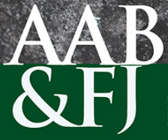Abstract
Poverty and Financial exclusion are the greatest challenges facing an emerging economy like India. Many countries, including India, had implemented subsidised credit to irradicate poverty, which only increased the NPA (Non-Performing Assets). MFIs (Microfinance Institutions) were formed to bridge the gap between the formal financial sector and the financially excluded. Social commitment forms one of the basic characteristics of the MFIs, and now its scope is broadening to social performance. However, like any other organisation, to continue their operations in the long run, financial sustainability is a key determinant for MFIs. Thus, the double bottom line commitments imply balancing financial and social performance. Certain developments in recent years brought a fresh focus on the problem of regulation in the field of microfinance. In the present scenario, the Indian MFI sector is largely unregulated. In India, a variety of legal forms of MFIs are found like NBFC-MFIs (Non-Banking Financial Companies-Microfinance Institutions), NBFCs, SHGs (Self Help Groups), Society, NGOs (Non-Governmental Organisations), Trusts, and Sec. 8 Company, etc., among which the lion's share goes to NBFC-MFIs/NBFCs. The paper analyses the double bottom-line performance of MFIs in India using secondary data of Indian MFIs extracted from various reports of Sa-Dhan, the World Bank, and the RBI (Reserve Bank of India). The paper also attempts to highlight the need for a regulatory body to guide, supervise and regulate different players in the Indian MFI sector.
Keywords: Microfinance, Financial Inclusion, Double Bottom Line, Social Performance, Financial Regulation
How to Cite:
Girijan, S. & Ramachandran, D., (2022) “Analysis of the Double Bottom Line Performance of Microfinance Institutions in India and the Need for Regulation in the Indian MFI Sector”, Australasian Accounting, Business and Finance Journal 16(6), 106-119. doi: https://doi.org/10.14453/aabfj.v16i6.07
Downloads:
Download PDF
550 Views
849 Downloads

